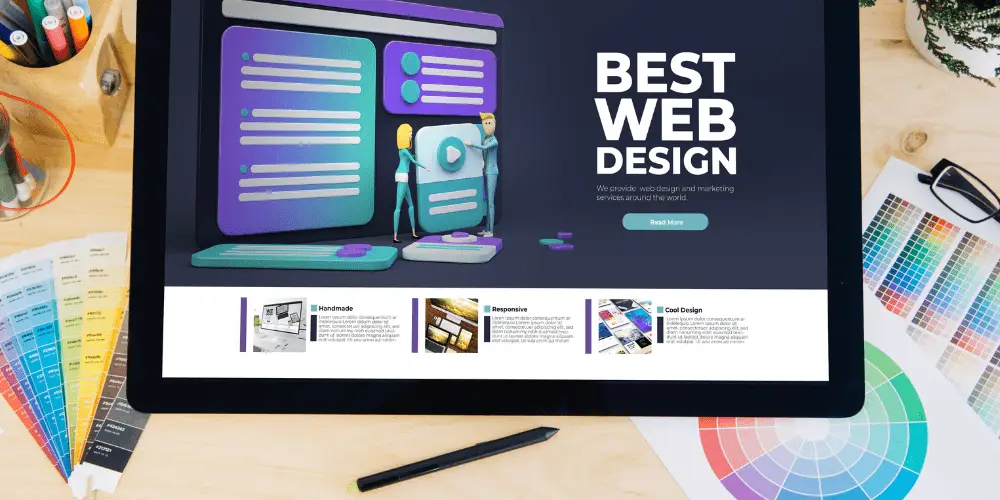Did you know that 73% of users will not recommend your site unless prompted? That's because so many websites are terrible. Most websites fail to convert visitors into leads because they lack a clear call-to-action and fail to address visitor concerns. Here is the complete guide on how to design a website that generates a ton of leads. Keep reading if you're ready to ditch the old, static brochure sites and create something dynamic, functional, and conversion-focused. A great site can stand out from the crowd and quickly give visitors all the information about your company. A well-designed site is also user-friendly and helps establish trust with visitors. When users visit your site for the first time, that experience should be like meeting you for the first time in real life. It should be memorable, interesting, engaging, trustworthy, and exciting.
1. Understanding Your Target Audience
- Define Your Ideal Customer Profile: Start by identifying the characteristics of your best customers. Consider demographics, psychographics, and buying behavior.
- Conduct Market Research and Analyze User Behavior: Use tools like surveys, focus groups, and web analytics to gather data on what your audience wants and needs.
- Create User Personas: Develop detailed personas that represent different segments of your audience. These should include information on their goals, pain points, and how they interact with your website.
2. Optimizing User Experience (UX)
- Importance of Responsive Design and Mobile Optimization: Ensure your website looks and functions well on all devices. A responsive design adapts to different screen sizes, providing a seamless experience.
- Simplifying Navigation and Improving Site Speed: Design an intuitive navigation structure that helps users find what they're looking for quickly. Optimize your site's loading speed to keep visitors engaged.
- Implementing Clear Calls-to-Action (CTAs): Strategically place CTAs throughout your site to guide users towards desired actions. Use compelling language and design elements to make them stand out.
3. Crafting Compelling Landing Pages
- Designing Visually Appealing and Focused Landing Pages: Use clean, professional design with high-quality images and a clear layout. Each landing page should have a single focus or goal.
- Writing Persuasive Copy and Using Strong Headlines: Craft headlines that grab attention and clearly convey the value proposition. Use persuasive language that addresses user needs and offers solutions.
- Incorporating Testimonials and Social Proof: Include testimonials, case studies, and reviews to build trust and credibility. Showcasing real experiences from satisfied customers can significantly boost conversions.
4. Effective Use of Lead Capture Forms
- Best Practices for Form Design and Placement: Keep forms short and simple, requesting only essential information. Place forms where they are easily accessible, such as at the end of blog posts or on dedicated landing pages.
- Balancing the Amount of Information Requested: Ask for the minimum amount of information necessary to follow up effectively. Consider using progressive profiling to gather more data over time.
- Using Lead Magnets to Incentivize Form Completion: Offer valuable incentives, such as eBooks, whitepapers, or discounts, in exchange for users' contact information.
5. Implementing SEO Strategies
- On-Page SEO Techniques: Optimize your site’s content with relevant keywords, meta tags, and header tags. Ensure each page has unique and descriptive meta descriptions.
- Creating High-Quality, Relevant Content: Regularly publish content that addresses your audience's needs and questions. Focus on quality over quantity to build authority.
- Building Backlinks and Improving Domain Authority: Engage in link-building activities, such as guest blogging and outreach. The more high-quality backlinks your site has, the higher it will rank in search results.
6. Utilizing Analytics and A/B Testing
- Setting Up and Understanding Website Analytics Tools: Use tools like Google Analytics to track visitor behavior, traffic sources, and conversion rates. Understand which metrics are most important for your goals.
- Tracking Key Performance Indicators (KPIs): Monitor metrics such as bounce rate, time on site, and conversion rate to gauge your site's performance and identify areas for improvement.
- Conducting A/B Tests to Optimize Conversion Rates: Test different versions of your pages, CTAs, and forms to see what works best. Use the data to make informed decisions and continuously improve your site’s effectiveness.
Bottom Line
That's the complete guide to designing a website that generates a ton of leads. A great website can stand out from the crowd and quickly give visitors all the information about your company. It should be visually appealing, easy to navigate, provide visitor education, create a sense of urgency, offer a compelling value proposition, and build a trustworthy environment. When designing a website, it's important to keep lead generation in mind from the start.

